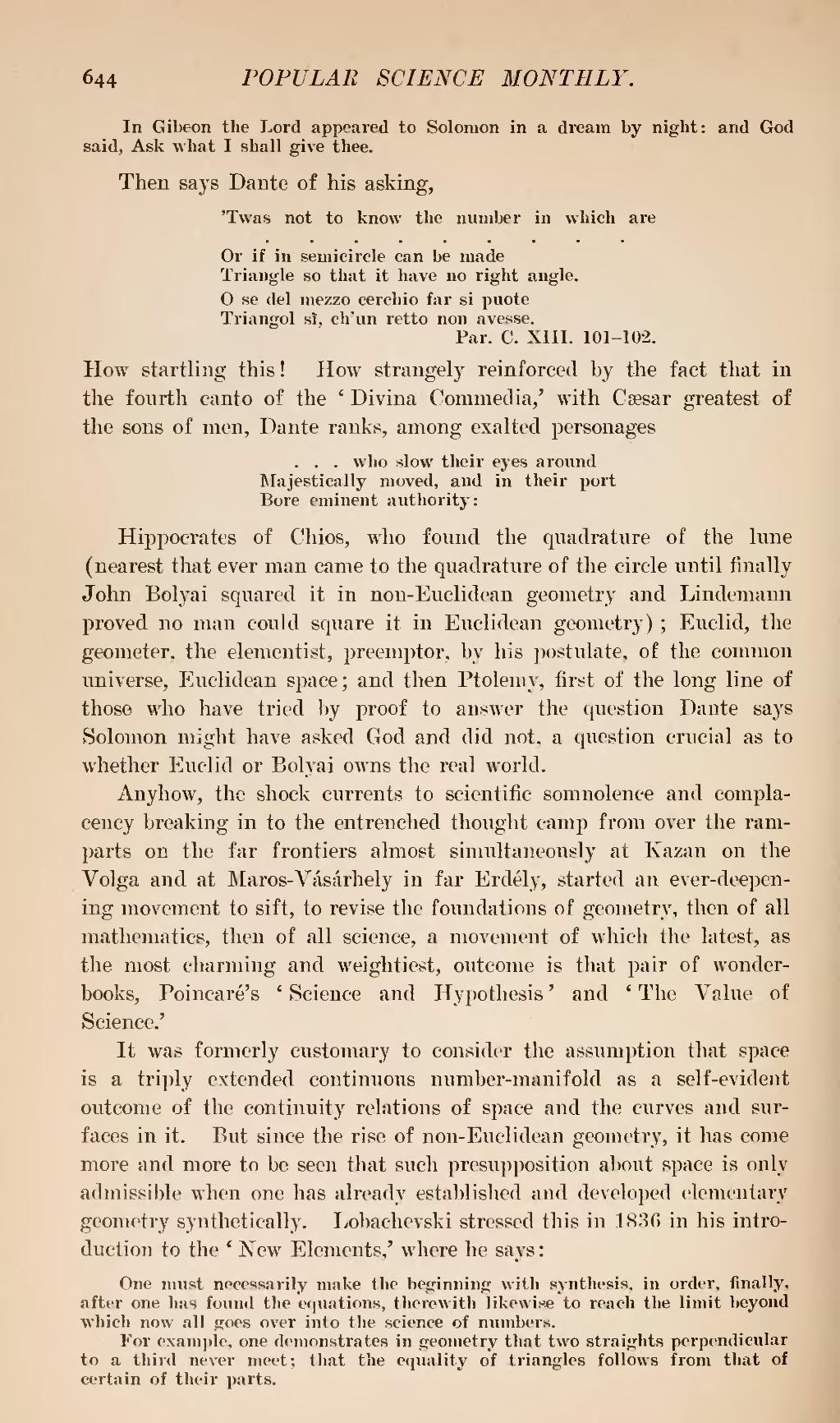'Twas not to know the number in which are
Or if in semicircle can be made
Triangle so that it have no right angle.
se del mezzo cerchio far si puote
Triangol si, ch'un retto non avesse.
Par. C. XIII. 101-102.
How startling this! How strangely reinforced hy the fact that in the fourth canto of the 'Divina Commedia,' with Caesar greatest of the sons of men, Dante ranks, among exalted personages
Majestically moved, and in their port
Bore eminent authority:
Hippocrates of Chios, who found the quadrature of the lune (nearest that ever man came to the quadrature of the circle until finally John Bolyai squared it in non-Euclidean geometry and Lindemann proved no man could square it in Euclidean geometry); Euclid, the geometer, the elementist, preemptor, by his postulate, of the common universe, Euclidean space; and then Ptolemy, first of the long line of those who have tried by proof to answer the question Dante says Solomon might have asked God and did not, a question crucial as to whether Euclid or Bolyai owns the real world.
Anyhow, the shock currents to scientific somnolence and complacency breaking in to the entrenched thought camp from over the ramparts on the far frontiers almost simultaneously at Kazan on the Volga and at Maros-Vásárhely in far Erdély, started an ever-deepening movement to sift, to revise the foundations of geometry, then of all mathematics, then of all science, a movement of which the latest, as the most charming and weightiest, outcome is that pair of wonderbooks, Poincaré's 'Science and Hypothesis' and 'The Value of Science.'
It was formerly customary to consider the assumption that space is a triply extended continuous number-manifold as a self-evident outcome of the continuity relations of space and the curves and surfaces in it. But since the rise of non-Euclidean geometry, it has come more and more to be seen that such presupposition about space is only admissible when one has already established and developed elementary geometry synthetically. Lobachevski stressed this in 1836 in his introduction to the 'New Elements,' where he says:
One must necessarily make the beginning with synthesis, in order, finally, after one has found the equations, therewith likewise to reach the limit beyond which now all goes over into the science of numbers.
For example, one demonstrates in geometry that two straights perpendicular to a third never meet; that the equality of triangles follows from that of certain of their parts.
